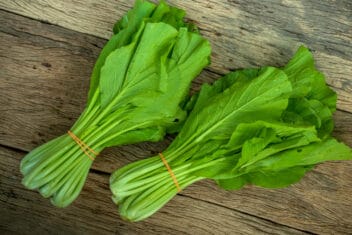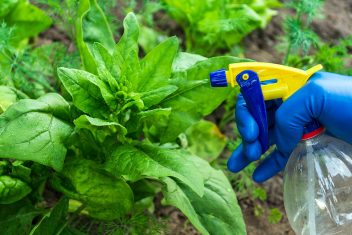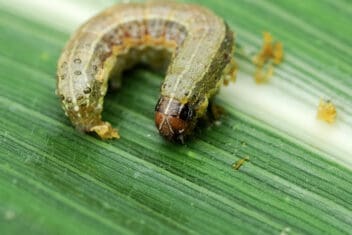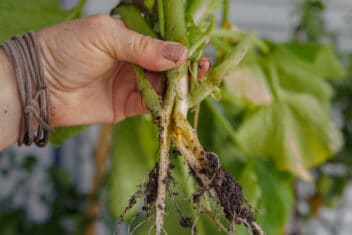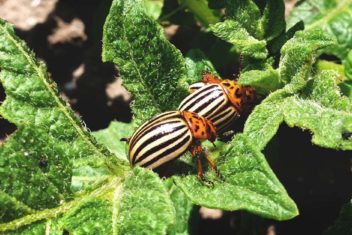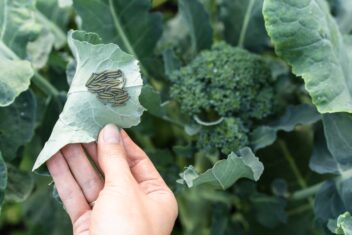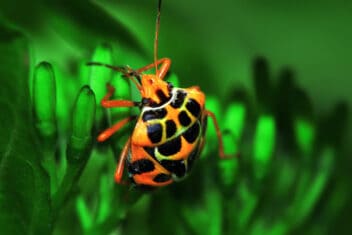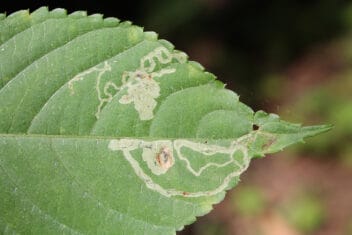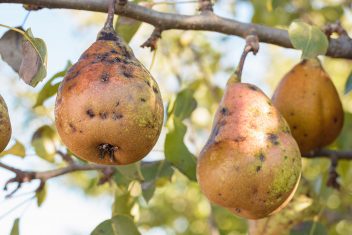Are your Rubus bushes dying, or your harvest isn’t what it should be? You might have one of the many common berry bush pests and diseases.
There are many different types of Rubus species, but they share common pests and diseases. From raspberries and blackberries to salmonberries, pests and diseases love these berry bushes almost as much as we love to eat the delicious fruits.
Don’t let problems steal your berries; read this guide to learn to watch for signs of problems and find the best ways to tackle them.
7 Common Berry Bush Pests
We’ll discuss berry diseases in a bit, but first: here are some of the most common berry bush pests that might destroy your plants.
1. Aphids

Aphids are tiny, pinhead-sized insects that gather together on the underside of leaves and stems. They suck out the plant juices, leaving behind a sticky residue called honeydew on your plants. Honeydew is a problem because it attracts ants and sooty mold.
Typically, aphids aren’t considered a problem unless the infestation gets to be too large. At that point, start by knocking the insects off of your plants with a strong jet of water. Then, use neem oil or horticultural oil to keep the aphids from returning.
Take a look at our guide on how to treat aphids in your garden.
2. Cane Borer
The adult cane borers are long-antennae beetles with a black head and yellow to orange body, measuring around 1/2 inch long. The larvae are the real problems, and they look like grubs with light-colored bodies. Adult cane borers lay the eggs on the top of the berry bushes, eventually hatching inside the canes and traveling down into the soil.
The larvae eat the canes, and you typically see sawdust from the damage. The canes may bulge and die back as well. Pruning helps to disrupt the life cycle, and you should always remove infected canes to help stop the travel and spread of this berry bush pest.
3. Fruitworm
Sometimes called raspberry beetles, fruit worms are red-brown beetles that measure 1/4 inch long. The larvae are small grubs that are creamy-white with darker bands. The adult fruit worms emerge from the soil in the spring when the temperatures warm up enough.
Adult fruit worms make a slit in the flower buds, allowing the larvae to feed on the berries. They also like to eat the leaves, eventually causing the defoliation of the plant and destruction of all the fruit. The damage caused by the beetles ranges from minor to severe.
Cleaning up the plant debris and putting out sticky traps help catch the beetles, but you might need to use insecticides if you have a severe problem. Look for an insecticide that contains spinosad, which is considered organic.
4. Japanese Beetle
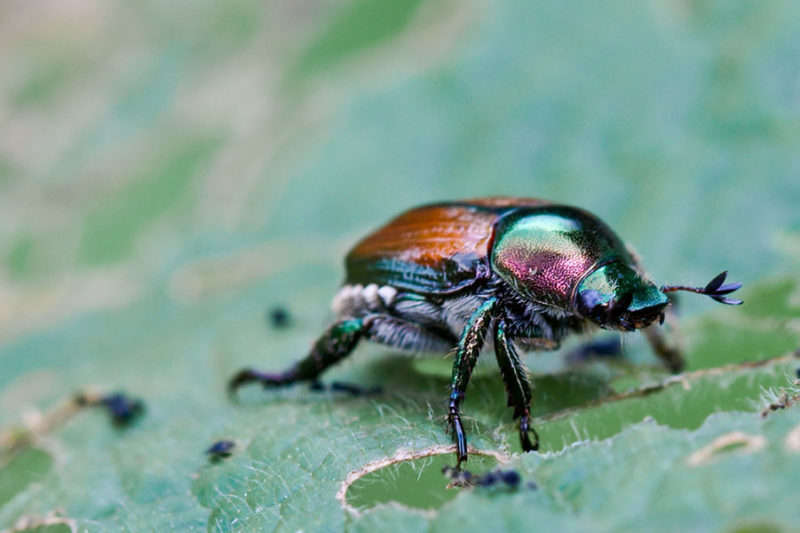
One of the easiest berry bush pests to recognize is the Japanese beetle. The adult beetles have a metallic-green color, and the larvae are cream-colored. The larvae feed on the roots of the berry bushes before they reach maturity. Adult Japanese beetles eat the leaves of your plants, eventually skeletonizing the leaves.
If you have a small infestation, manual removal helps reduce the population. Using gloved hands, remove the beetles off the plants and drop them into a bucket of hot soapy water. Another option is to spray your plants with neem oil.
5. Leafhopper
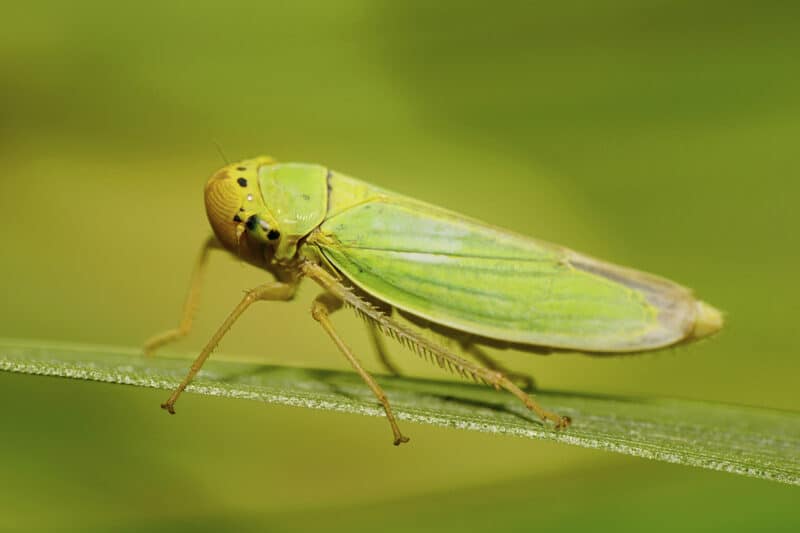
Leafhoppers are small, winged insects that vary in color; you typically find leafhoppers on the underside of leaves. An infestation slows the growth of the berry bush. Eventually, the leaves become whitened, stippled, or mottled. Over time, the leaf tips wither and die.
One of the bigger problems with leafhopper infestations is that these pests often carry diseases, so an infestation might cause serious problems. You want to get rid of these pests; insecticidal soaps or horticultural oils are effective measures.
Here is our guide to leafhoppers in the garden.
6. Mites
Mites are pin-sized arthropods that vary in color because there are several types of mites. Most of the time, you’ll find these pests on the underside of leaves. They like to suck the sap out of leaves, causing a bronzed appearance on the foliage. If you have a severe infestation of mites, it leads to silken webbing ad defoliation of the plants.
Releasing natural predators in your garden is one way to control the mite’s population. Try the western predatory mite or lacewings. Most miticides and insecticides don’t work because these pests have become resistant to them.
Look at our guide to dealing with mites.
7. Thrips
Thrips are slender, tiny, winged insects that measure up to 1/8 inch long. The nymphs are pale yellow and active, while the adults are black or yellow-brown, but some have red or white markings.
When you have thrips on your berry bushes, they feed on the foliage, sucking up the plant sap, causing discoloration and deformation. These pests are similar to mites when it comes to the damage they cause. Using insecticidal soaps and horticultural oils on the Rubus plants are effective measures to take.
Learn how to deal with a thrips infestation with our guide.
5 Common Berry Bush Diseases
Now, let’s take a look at some of the most common berry bush diseases you might find on your plants.
1. Anthracnose
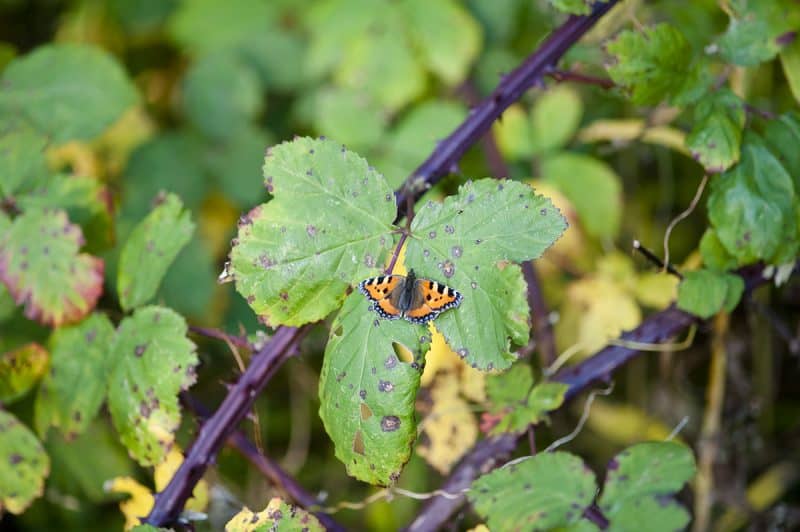
One of the most common berry bush diseases is anthracnose, a fungal infection that lives in the soil and infects the bushes by splashing onto the leaves by rain or irrigation. Anthracnose thrives in warm, wet weather, and it overwinters on old canes. While this disease is most common on raspberry plants, it infects any Rubus species.
This fungal infection causes reddish-brown sunken spots with purple margins on the leaves, along with spots on the young shoots. You might find lesions on the canes between where the leaves grow. Anthracnose causes leaves to drop off the plant early, and the fruits may dry up.
Take a look at our guide on anthracnose to learn how to get rid of this fungal infection.
2. Cane Blight
Cane blight is a fungal disease caused by Leptosphaeria coniothyrium, and it spreads when rain or irrigation splashes infected soil onto the leaves of your plants. Then, it enters wounds made by different pests or by pruning. This fungus loves warm, wet weather, so it spreads the quickest during late spring and early summer.
This fungal disease causes large, brown, dead areas on your plants called cankers. Eventually, the leaves on the berry bushes start to wilt and wither. Make sure to cut back the canes below the canker; always disinfect the pruning shears between cutting. Prune the plants to improve air circulation and avoid overhead watering to stop the spread.
3. Gray Mold
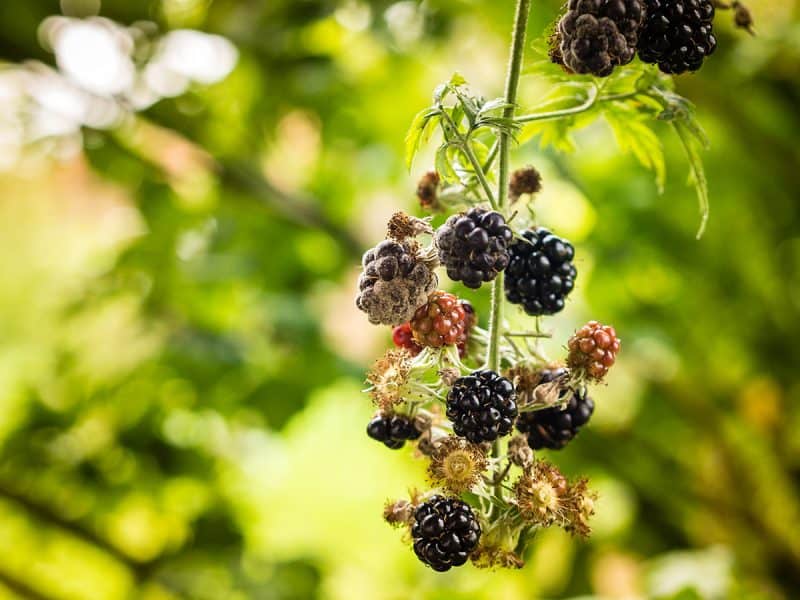
Gray mold is sometimes called botrytis fruit rot because it’s caused by Botrytis cinerea, a fungus that overwinters in dropped fruit and infected plant debris. It spreads quickly in the early spring because it prefers warm, wet weather.
You’ll notice gray, hairy mold that causes the blossoms to decay, and it spreads on the ripening fruits. It’s important to remove and destroy fruiting canes that are infected and never leave fruits or debris on the ground.
Prune the plant to improve air circulation, but since this is a rapidly spreading fungal infection, it’s hard to get rid of it entirely. Some fungicides might be able to slow the spread.
4. Leaf Curl
Leaf curl is a virus that spreads via pests like aphids, and it’s typically fatal to infected plants. However, the virus is slow-acting, so the plants decline over a two to three-year period.
The symptoms cause the leaves to thicken and curl, similar to what happens when you have an aphid infestation. Then, the leaves start turning a dull, yellow-green color, and you’ll have stunted shoot growth. As the disease worsens, the plants become stunted and produce little to no fruit. Eventually, the entire plant dies.
Since there is no cure for leaf curl, preventing the spread of aphids in your garden is essential. Remove infected plants as soon as the virus is identified.
5. Spur Blight
Spur blight is a fungal infection that spreads by the wind or splashing infected soil onto the leaves via rain or irrigation. In the late spring, spur blight causes purple or brown discoloration on the leaves and buds. Gradually, these spots get larger, expanding down the canes, covering the area between the leaves. It also causes the leaves to turn yellow and fall off.
It’s important to remove old fruiting canes from your Rubus bushes and keep the growing area around your bushes clean. Pruning is essential to improve air circulation. You can use Neem oil and a copper fungicide to treat spur blight.

